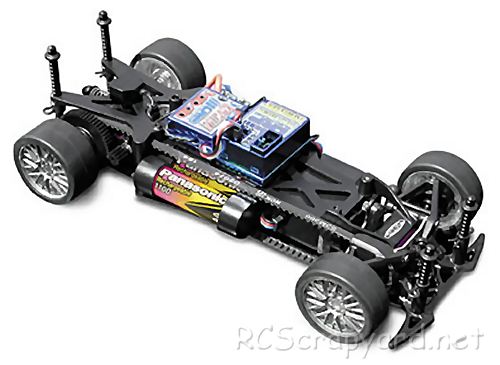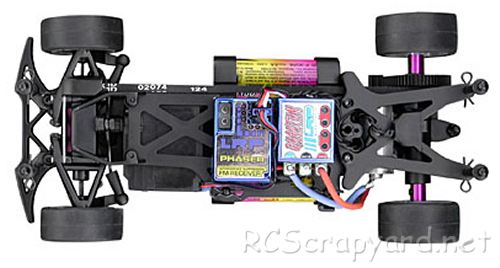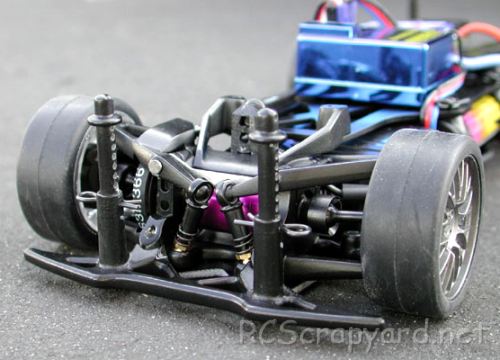

|


|
|
1/18 Scale Electric Rally/Touring Car:
HPI Micro RS4 - Honda Civic Coupe - # 610 (Radio Controlled Model Review)History and Info:
Introduced by HPI (Hobby Products International) in 2001, the Honda Civic Coupe - # 610 - based on the Micro RS4 Touring Car chassis, came as an unassembled kit, with a Motor and lexan Bodyshell. Designed for standard size RC electrics, a Steering Servo, ESC, AA Batteries (run times up to 40 minutes) and a Radio System to be purchased separately. A number of other bodyshell options were available (Check out our HPI Archive).
▼ Scroll Down for More Images ▼
|








|
|
|

★ HPI Micro RS4 Chassis ★

★ HPI Micro RS4 Chassis ★

★ HPI Micro RS4 Chassis ★

|
Buying a Used HPI Micro RS4
|
|
Manufacturers and Brands Catalogued and Listed by RC-Scrapyard.
At present, the RC Model Manufacturers, Brands and Distributors covered by us are: ABC Hobby, Academy, Acme Racing, Agama Racing, Amewi, Ansmann Racing, ARRMA, Team Associated, Atomic RC, Axial, AYK, Bolink, BSD Racing, Capricorn, Carisma, Carson, Caster Racing, Cen, Corally, Custom Works, Durango, Duratrax, ECX - Electrix, Exceed RC, FG Modellsport, FS-Racing, FTX, Fujimi, Gmade, GS-Racing, Harm, HBX, Helion, Heng Long, Himoto Racing, Hirobo, Hitari, Hobao, Hong-Nor, Hot Bodies, HPI, HSP, Intech, Integy, Jamara, JQ Products, Kawada, Kyosho, Losi, LRP, Maisto, Mardave, Marui, Maverick, MCD Racing, Megatech, Mugen, New Bright, Nichimo, Nikko, Nkok, Ofna, Pro-Pulse, Protech, PTI, RC4WD, Redcat Racing, RJ-Speed, Robitronic, Schumacher, Seben, Serpent, Smartech, Sportwerks, Step-Up, Tamiya, Team-C Racing, Team Magic, Thunder Tiger, Tomy, Top Racing, Traxxas, Trinity, Tyco, Vaterra RC, Venom, VRX Racing, WLToys, X-Factory, Xmods, Xpress, Xray, XTM, Yankee RC, Yokomo, ZD Racing and Zipzaps. |
|
Hints, Tips and Information
Battery Connectors
Over the years I have been racing radio controlled model cars of all descriptions, I have tried a number of different connectors for my batteries.
|
|
Hints, Tips and Information
My First National
When I first started in RC, way back in the late 1980s, I would turn up to the weekly club meeting, with my Tamiya Boomerang, Acoms transmitter, two sets of crystals, a couple of 7.2v batteries, a charger and a tool box with a wheel spanner and a few spares. |
|
RC Models:
|
Radio & Motors: |
Other
Accessories: |